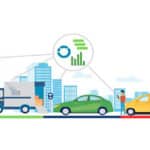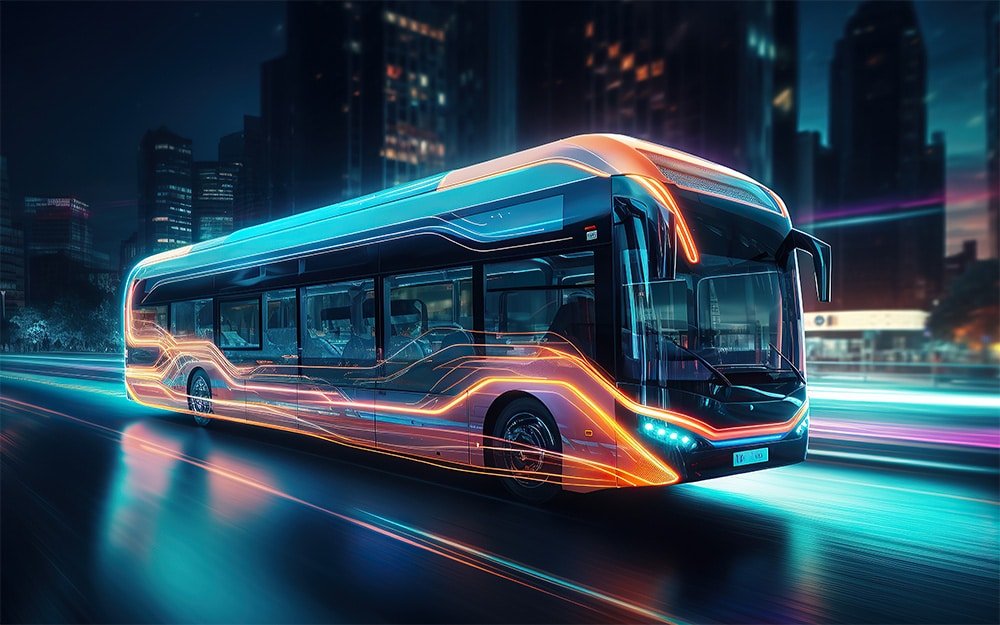Home » Innovation & Technology » The Digital Tsunami is Here
Innovation & Technology
The Digital Tsunami is Here
How Data Standards are Shaping the Future of an Interconnected World
In a fast-paced world of technology and innovation, data standards are the unsung heroes that shape industries. The parking and mobility industry is no exception. A key component is understanding what data standards are and their significance in grasping the transformative impact they hold.
Unveiling the Essence of Data Standards
Data standardization involves establishing uniform guidelines throughout the data value chain. These standards include data collection attributes, organizational structure, storage protocols, and utilization methodologies.1 The overarching goal is to enhance interoperability, streamline processes, and mitigate redundancy.
At its core, data standards promote interoperability among datasets, facilitating seamless data exchange and integration. This, in turn, paves the way for a more efficient and connected ecosystem. It also plays a pivotal role in cybersecurity by increasing the capacity to detect and respond to threats. By integrating databases and leveraging the scale of data, systems can more effectively identify patterns of suspicious activity and future attacks.
Drawing Insights from Historical Lessons
The roots of data standardization trace back to the end of World War II in response to the logistical complexity of the 1948 Berlin Airlift. Air traffic was slowed by bottlenecks created at unloading, with ground crews having to check long lists of goods brought by each plane. To resolve this problem, a standardized system of codes was created, allowing shipment notices to be electronically reported before the plane landed.2 This set the precedent for the transformative power of data standards, overcoming operational hurdles and pushing industries forward.
IPMI Flashback: One of the first articles on a new industry standard was introduced by Mike Drow, CAPP, and Rachel Yoka, CAPP, LEED AP BD+C in The Parking Professional August 2017 issue. They wrote that by simply sharing the basics of facility details, parkers and travelers can find parking faster and know current parking levels before arriving at their destination. Today, it is known as APDS.
Unraveling the Significance in Parking and Mobility
In the world of parking and mobility, data standards are welcoming in a new era of digital efficiency, accessibility, and connectivity, specifically from the Alliance of Parking Data Standards (APDS), Mobility Data Specifications (MDS), and Curb Data Specifications (CDS). Industry experts and leaders spearhead these initiatives and offer a unified framework for streamlining parking and mobility operations while enhancing the user experience by reducing switching costs and data duplication.
By providing common languages for parking and mobility data, these standards allow for transparency and interoperability across global or local platforms, enabling solutions to scale as needs evolve. They also accelerate decision-making processes by unlocking valuable insights and driving informed decision-making, as well as optimizing resource allocation, which enhances operational efficiency.
The importance of adopting data standardization for your parking and mobility operation/business cannot be overstated, especially in our explosive digital landscape. The world continues to move in a direction where 95% of U.S. adults use the internet through mobile or connected devices.3 Smartphones and IoT devices are almost at full user saturation, and as they continue to proliferate, data standards become imperative. By 2030, it is projected that almost 30 billion IoT devices will be connected to web services.4
With technology and AI evolving exponentially, data standards serve as the anchor for driving innovation and connectivity. The seamless data flow empowers users with enhanced safety, integration, and choice, from mobile wallets to connected vehicles. As the U.S. Department of Transportation integrates Connected Vehicles into its ITS 2020-2025 Strategic Plan, data standards will play a pivotal role in shaping the future of transportation. From safety-related messages to efficient trip planning, standardized data formats will allow for the seamless integration of technology into everyday life.
Taking Immediate Action: Why Wait?
Data standards represent a bedrock of innovation and progress in the parking and mobility industry. They are instrumental in driving transformative change and shaping the future. We are standing on the cusp of the digital revolution in parking and mobility; embracing standards at this point is not a choice but a necessity. Users want the most reliable and updated information when making a purchase.
Act now, seize this moment to adopt data standards, and pave the way for a smarter, more connected future, unlocking the full potential of digital parking and mobility solutions. ◆
References
- https://en.wikipedia.org/wiki/Electronic_data_interchange
- https://www.nyulawreview.org/wp-content/uploads/2019/10/NYULAWREVIEW-94-4-GalRubinfeld-1.pdf
- https://www.pewresearch.org/internet/fact-sheet/mobile/?tabId=tab-0ec23460-3241-4a1f-89bc-0c27fb641936
- https://www.statista.com/statistics/1183457/iot-connected-devices-worldwide/
Jacob Larson serves as Applications Analyst for the City of Omaha—Parking Division and a member of IPMI’s Technology Committee and Smart Transportation Task Force.


-
Jacob Larsonhttps://parking-mobility-magazine.org/author/jacob-larson/August 1, 2023
-
Jacob Larsonhttps://parking-mobility-magazine.org/author/jacob-larson/December 6, 2023
Sonny Samra s a revenue, strategy, and partnerships leader in the parking and mobility space and a member of the IPMI Technology Committee.

-
Sonny Samrahttps://parking-mobility-magazine.org/author/sonny-samra/November 1, 2023















